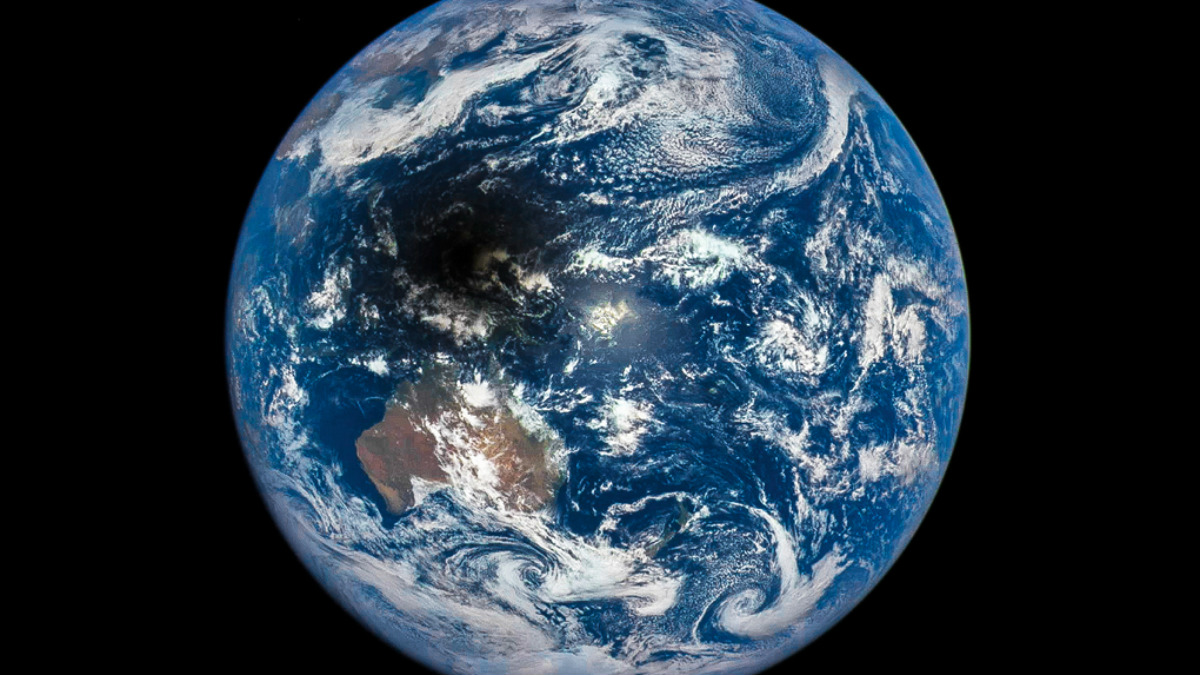How life on Earth began
New discovery sheds light on beginnings of our planet - and could help in search for aliens

The conditions for life on Earth were created when the planet crashed into another body the size of Mars about 4.4 billion years ago, a new study claims.
For life to emerge on an otherwise dead planet, “an assortment of chemical compounds, or volatile elements, are required, including carbon, nitrogen and sulfur”, says science news site Gizmodo. Conventional scientific thinking has always been that Earth’s volatile elements arrived through a steady bombardment of ancient meteorites.
But according to the “giant impact hypothesis”, outlined in a newly published paper in journal Science Advances, a single catastrophic cosmic crash delivered most of the volatile elements essential for life to the Earth.
The Week
Escape your echo chamber. Get the facts behind the news, plus analysis from multiple perspectives.

Sign up for The Week's Free Newsletters
From our morning news briefing to a weekly Good News Newsletter, get the best of The Week delivered directly to your inbox.
From our morning news briefing to a weekly Good News Newsletter, get the best of The Week delivered directly to your inbox.
Lab experiments and computer simulations by scientists at Rice University, in Texas, “suggested that debris from the destroyed planet deposited the life elements on Earth”, included most of the nitrogen and carbon found in all living things, reports The Independent.
The scientists believe the debris from the collision also created the Moon, while the so-called “donor planet” is thought to have been an embryonic world with a sulphur-rich core.
Lead scientist Rajdeep Dasgupta said: “From the study of primitive meteorites, scientists have long known that Earth and other rocky planets in the inner solar system are volatile-depleted.
“But the timing and mechanism of volatile delivery has been hotly debated. Ours is the first scenario that can explain the timing and delivery in a way that is consistent with all the geochemical evidence.”
A free daily email with the biggest news stories of the day – and the best features from TheWeek.com
He added that the study could boost scientists’ understanding of how the ingredients for life might form on other similarly rocky planets like our own.
“This study suggests that a rocky, Earth-like planet gets more chances to acquire life-essential elements if it forms and grows from giant impacts with planets that have sampled different building blocks, perhaps from different parts of a protoplanetary disk,” he said.
However, Dasgupta admitted to Gizmodo that the study was “based entirely on the geochemical behavior of elements” and didn’t look at the “dynamics or physical processes involved in planetary accretion and growth”.
The team now hope to integrate their new theoretical model with physical models.
“In other words, this ain’t over yet,” says the site.
-
 How Bulgaria’s government fell amid mass protests
How Bulgaria’s government fell amid mass protestsThe Explainer The country’s prime minister resigned as part of the fallout
-
 Femicide: Italy’s newest crime
Femicide: Italy’s newest crimeThe Explainer Landmark law to criminalise murder of a woman as an ‘act of hatred’ or ‘subjugation’ but critics say Italy is still deeply patriarchal
-
 Brazil’s Bolsonaro behind bars after appeals run out
Brazil’s Bolsonaro behind bars after appeals run outSpeed Read He will serve 27 years in prison
-
 Americans traveling abroad face renewed criticism in the Trump era
Americans traveling abroad face renewed criticism in the Trump eraThe Explainer Some of Trump’s behavior has Americans being questioned
-
 Nigeria confused by Trump invasion threat
Nigeria confused by Trump invasion threatSpeed Read Trump has claimed the country is persecuting Christians
-
 Sanae Takaichi: Japan’s Iron Lady set to be the country’s first woman prime minister
Sanae Takaichi: Japan’s Iron Lady set to be the country’s first woman prime ministerIn the Spotlight Takaichi is a member of Japan’s conservative, nationalist Liberal Democratic Party
-
 Russia is ‘helping China’ prepare for an invasion of Taiwan
Russia is ‘helping China’ prepare for an invasion of TaiwanIn the Spotlight Russia is reportedly allowing China access to military training
-
 Interpol arrests hundreds in Africa-wide sextortion crackdown
Interpol arrests hundreds in Africa-wide sextortion crackdownIN THE SPOTLIGHT A series of stings disrupts major cybercrime operations as law enforcement estimates millions in losses from schemes designed to prey on lonely users


